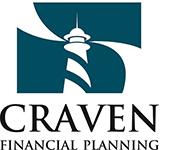Moving RRSPs and RRIFs to TFSAs


Tax-Efficient Strategies for Moving RRSPs and RRIFs to TFSAs – Advice from Bill Craven
Understanding RRSPs, RRIFs, and TFSAs in Ontario Retirement Planning
For many Ontarians, a Registered Retirement Savings Plan (RRSP), Registered Retirement Income Fund (RRIF), and Tax-Free Savings Account (TFSA) are the foundation of a well-structured retirement plan. Each of these accounts serves a its own purpose, offering tax advantages that can help maximize your savings and retirement income.
Overview of RRSPs & RRIFs
Account Type | Key Features | Tax Treatment | Usage in Retirement |
RRSP | Contributions are tax-deductible, and investments grow tax deferred. | Withdrawals are fully taxable as income. | Designed for long-term retirement savings, often converted to an RRIF at age 71. |
RRIF | Converts an RRSP into a retirement income stream. | Withdrawals are taxable; mandatory minimum withdrawals begin at age 71. | Ensures a steady flow of retirement income while keeping funds invested. |
Understanding TFSAs and Non-Registered Accounts
Account Type | Key Features | Tax Treatment | Usage in Retirement |
TFSA | Contributions are not tax-deductible, but investment growth and withdrawals are tax-free. | No taxes on gains or withdrawals. | Great for supplementing income without affecting taxable income. |
Non-Registered Accounts | No contribution limits; full flexibility in investments. | Capital gains and dividends are taxable. | Used for additional investment opportunities and estate planning strategies. |
While these accounts each offer significant benefits, many people in Ontario find themselves reevaluating their strategies as they transition into retirement. Some of the most common reasons for transferring funds from an RRSP or RRIF into a TFSA or a non-registered account include:
- Reducing tax liability: RRIF withdrawals are fully taxable, while TFSA withdrawals are tax-free, making strategic transfers appealing.
- Minimizing mandatory withdrawals: Some retirees seek ways to control their taxable income by shifting assets strategically.
- Estate planning advantages: Transferring funds into a TFSA can provide a tax-efficient way to pass on wealth to beneficiaries.
Whether you are looking to reduce your overall tax burden, enhance your retirement income, or plan your estate effectively, understanding the best way to migrate funds between these accounts is key.
Reasons to Consider Transferring Funds
Retirement planning isn’t just about saving—it’s also about managing your money efficiently when you start withdrawing funds. Many Ontarians consider transferring RRSP and RRIF funds into a TFSA or non-registered account for three main reasons: reducing future tax liability, managing mandatory RRIF withdrawals, and simplifying estate planning. Let’s break down how these strategies can work to your advantage.
Reducing Future Tax Liability
One of the most compelling reasons for transferring funds is minimizing long-term taxes. Withdrawals from RRSPs and RRIFs are fully taxable as income, which means they can push retirees into a higher tax bracket. By strategically withdrawing funds from an RRSP or RRIF before you’re required to and reinvesting them in a TFSA, you can continue growing your savings while keeping future taxable income lower.
For example, a retiree in Chatham, ON, who expects their RRIF withdrawals to exceed their spending needs could gradually withdraw funds before age 71, pay a lower tax rate today, and move the money into a TFSA. This way, they avoid larger withdrawals in later years that could trigger Old Age Security (OAS) claw backs or higher marginal tax rates.
Key Takeaway:
✅ Withdraw funds gradually before they become mandatory.
✅ Move excess funds into a TFSA for tax-free growth and withdrawals later.
✅ Reduce the risk of OAS claw backs and high marginal tax rates.
Managing Mandatory RRIF Withdrawals
At age 71, RRSPs must be converted into a RRIF, and minimum withdrawals become mandatory. The problem? These withdrawals may be larger than what you actually need, leading to unnecessary taxation and reducing the longevity of your savings.
A solution is to reinvest a portion of RRIF withdrawals into a TFSA. Since TFSA withdrawals are tax-free, this gives retirees more flexibility with their income in later years.
Example:
Sarah, a retiree in London, ON, is required to withdraw $30,000 from her RRIF each year, but she only needs $20,000 for expenses. Instead of keeping the extra $10,000 in a taxable investment, she moves it into her TFSA, where it continues to grow tax-free.
Key Takeaway:
✅ If RRIF withdrawals exceed your spending needs, shift excess funds to a TFSA.
✅ Avoid paying unnecessary tax by managing withdrawals proactively.
Estate and Legacy Planning Considerations
Without proper planning, RRSPs and RRIFs can become fully taxable upon death, with the remaining balance added to the deceased’s final tax return as income. This can result in a hefty tax bill, leaving less for beneficiaries.
By transferring funds to a TFSA or non-registered account over time, retirees can reduce the taxable estate and provide a more tax-efficient inheritance. Unlike an RRSP or RRIF, a TFSA can be passed to a spouse tax-free, preserving its full value.
Example:
John, a retiree in Sarnia, ON, has $300,000 in his RRIF. If he were to pass away suddenly, his estate could face taxes of 40% or more on those funds. However, by gradually withdrawing smaller amounts each year and moving them into a TFSA, he significantly lowers the final tax bill for his heirs.
Key Takeaway:
✅ Reduce estate taxes by shifting funds gradually to a TFSA.
✅ TFSAs allow for tax-free inheritance when passed to a spouse.
Transferring funds between retirement accounts isn’t a one-size-fits-all strategy. It requires careful planning based on your income, tax bracket, and long-term financial goals. Whether you’re looking to lower your tax burden, optimize withdrawals, or plan your estate efficiently, understanding these options can help you preserve more of your wealth for yourself and your loved ones.
RRIF to Non-Registered Account Transfers: Capital Gains & Taxation
When RRIF withdrawals are not needed for expenses, some retirees invest the funds in a non-registered account. However, doing so comes with its own tax implications, particularly for capital gains, interest income, and dividends.
Understanding Taxation on Non-Registered Investments
Type of Investment Income | Tax Treatment |
Interest Income (e.g., Bonds, GICs, High-Interest Savings Accounts) | Fully taxable at your marginal tax rate. |
Dividends (e.g., Canadian Stocks & ETFs) | Eligible for the dividend tax credit, reducing overall tax. |
Capital Gains (e.g., Selling Stocks, ETFs, Mutual Funds) | Only 50% of capital gains are taxable at your marginal rate. |
Practical Tax-Minimization Strategies
- Prioritize dividend-paying Canadian stocks for tax-efficient investment income.
- Invest in capital gain-generating assets since only 50% of the gain is taxed.
- Consider a spousal investment strategy to split investment income and lower the tax burden.
Transferring funds between RRSPs, RRIFs, TFSAs, and non-registered accounts requires careful tax planning. By strategically managing withdrawals, timing RRSP-to-TFSA transfers, and investing RRIF withdrawals wisely, retirees in Ontario can minimize taxes and maximize retirement income.
Step-by-Step Guide: Transferring Your RRSP/RRIF to a TFSA or Non-Registered Account
Transferring funds from an RRSP or RRIF to a TFSA or non-registered account can be a powerful way to optimize your retirement savings—if done correctly. This section walks you through the different methods, tax impacts, and best timing strategies to make the transition as tax efficient as possible.
In-Kind Transfers: Keeping Investments Intact
An in-kind transfer allows you to move an investment—such as stocks, mutual funds, or ETFs—directly from an RRSP or RRIF to a TFSA or non-registered account without selling it first.
How In-Kind Transfers Work
- Request an in-kind withdrawal from your RRSP or RRIF.
- The transferred asset is deemed as sold at its market value at the time of transfer.
- The value of the asset is added to your taxable income, just like a cash withdrawal.
- If moving to a TFSA, you must have enough contribution room to accommodate the transfer.
Tax Impact of In-Kind Transfers
- Capital gains tax does NOT apply when transferring from an RRSP or RRIF—but the full market value is taxed as income.
- If the asset has decreased in value, you still pay tax on its full market value at the time of transfer, meaning potential tax inefficiencies.
- Once inside a TFSA, the asset can grow tax-free, and all future withdrawals remain tax-free.
Example – In-Kind Transfer in Action
Michael, a retiree in London, ON, owns $10,000 worth of stock in his RRSP. Instead of selling the stock and withdrawing the cash, he transfers it in-kind to his TFSA. The stock is deemed as sold at market value, so $10,000 is added to his taxable income for the year. However, once inside the TFSA, any future gains or dividends from this stock will be completely tax-free.
Key Takeaways:
✅ In-kind transfers keep investments intact but are taxed as income.
✅ They can be useful when moving investments into a TFSA for tax-free growth.
✅ Avoid transferring depreciated assets, as capital losses cannot be claimed.
Cash Withdrawals and Contributions: When It’s Beneficial
An alternative to in-kind transfers is withdrawing cash from an RRSP or RRIF and reinvesting it into a TFSA or non-registered account. This strategy can be particularly useful if planned around low-income years or if withholding tax is carefully managed.
When a Cash Withdrawal Makes Sense
- You expect lower income in a specific year (e.g., before OAS and CPP begin).
- You have a large tax deduction (e.g., medical expenses, charitable donations) to offset some of the tax impact.
- You want to replenish your TFSA contribution room to maximize tax-free savings.
Withholding Tax Considerations
When withdrawing cash from an RRSP, the financial institution withholds tax immediately based on the amount withdrawn:
Withdrawal Amount | Withholding Tax Deducted in Ontario |
Up to $5,000 | 10% |
$5,001 to $15,000 | 20% |
Over $15,000 | 30% |
Note: The final tax rate you owe depends on your total annual income.
Example – Strategic Cash Withdrawal
Sandra, a retiree in Chatham, ON, has $50,000 in her RRSP and $40,000 in unused TFSA contribution room. Instead of withdrawing the full amount at once (which would result in a 30% withholding tax), she:
- Withdraws $10,000 in December (withholding tax: 20%).
- Withdraws another $10,000 in January of the next year (withholding tax: 20%).
- Deposits the full amount into her TFSA, where it continues to grow tax-free.
By spacing out withdrawals over two years, she reduces the immediate tax impact and maximizes her TFSA contributions.
Key Takeaways:
✅ Small withdrawals over multiple years can reduce withholding tax.
✅ Withdraw during low-income years to minimize tax impact.
✅ TFSA contributions should be timed to maximize tax-free growth.
Strategic Withdrawal and Contribution Timing
Timing is everything when transferring RRSP or RRIF funds. Making withdrawals at the wrong time can result in higher taxes, while strategic timing can help reduce your overall tax bill.
Best Times to Withdraw & Contribute
Best Time | Why? |
Before age 71 | Lower income years before RRIF withdrawals begin allowing for tax-efficient RRSP withdrawals. |
January-March (Tax Season) | Review previous year’s income and contribution room before making TFSA deposits. |
End of Year (November-December) | Make RRSP withdrawals before year-end if expecting a lower tax bracket. |
Before Major Government Benefits Start | Withdraw RRSP funds before receiving OAS/CPP to reduce taxable income and avoid claw backs. |
Whether using in-kind transfers, cash withdrawals, or timing strategies, the key to tax-efficient RRSP & RRIF transfers is planning ahead. By understanding the tax impacts and best timing for each method, Ontario retirees can maximize their retirement income while minimizing taxes.

Expert Tips from Bill Craven – Real Ontario Scenarios
Over the years, I’ve worked with many Ontario retirees navigating RRSP and RRIF transfers, and I’ve seen firsthand how small adjustments can lead to big tax savings and better financial security. In this section, I’ll share some of my top strategies for making these transfers work in your favour, as well as some of the most common mistakes to avoid.
Advice on RRSP & RRIF Transfers
- Plan RRSP Withdrawals Well Before Converting to a RRIF
Many retirees wait until they turn 71 to start thinking about RRIF withdrawals. This can be a costly mistake, as large, forced withdrawals from a RRIF can push you into a higher tax bracket. Instead, I often advise clients to start drawing from their RRSPs earlier, in their 60s, when they may have a lower income.
- Use RRIF Withdrawals to Maximize TFSA Contributions
One of the smartest moves Ontario retirees can make is reinvesting excess RRIF withdrawals into a TFSA. Since RRIF withdrawals are mandatory, using any extra funds to top up your TFSA ensures that your money continues to grow tax-free.
- Transfer Assets In-Kind When It Makes Sense
Most people assume they must sell investments before transferring them out of an RRSP or RRIF. In some cases, however, using an in-kind transfer—where investments are moved without being sold—can be beneficial, particularly if the investment is expected to grow significantly in the future.
Common Mistakes to Avoid
Even the best-laid financial plans can go off track if key mistakes aren’t avoided. Here are the most common ones I see among Ontario retirees:
Mistake #1: Withdrawing Large Sums Without Tax Planning
A one-time large withdrawal from an RRSP or RRIF can be a huge tax hit. Many retirees forget to plan for withholding taxes, leading to an unexpected tax bill at the end of the year.
How to Avoid It:
✅ Take smaller withdrawals over multiple years to avoid being pushed into a higher tax bracket.
✅ Time withdrawals carefully (e.g., withdrawing in years with lower income).
Mistake #2: Forgetting About Old Age Security (OAS) Claw backs
If your net income exceeds $90,997 (2024 threshold), your OAS payments could be clawed back at a rate of 15% per dollar over the limit. Large RRIF withdrawals can easily push you above this threshold.
How to Avoid It:
✅ Keep taxable income below the OAS clawback threshold by spreading out RRIF withdrawals.
✅ Reinvest excess RRIF withdrawals into a TFSA to prevent future taxable income increases.
Mistake #3: Ignoring the TFSA as a Retirement Tool
Too many retirees overlook the power of TFSAs as a key retirement savings vehicle. Unlike RRSPs and RRIFs, TFSA withdrawals don’t count as taxable income, meaning they don’t affect OAS or other government benefits.
How to Avoid It:
✅ Max out TFSA contributions every year to build tax-free retirement savings.
✅ Shift excess RRIF withdrawals into a TFSA whenever possible.
The difference between paying thousands in unnecessary taxes and keeping more of your retirement savings often comes down to strategy and planning. By following these expert tips and avoiding common mistakes, Ontario retirees can ensure their RRSP and RRIF transfers work in their favour—not against them.
Frequently Asked Questions
Can I transfer RRIF funds tax-free to a TFSA in Ontario?
No, RRIF funds cannot be transferred tax-free to a TFSA. Any withdrawal from a RRIF is considered taxable income in the year it is withdrawn. However, once the funds are withdrawn and taxes are paid, you can contribute the remaining amount to a TFSA, provided you have available contribution room.
✅ How to minimize tax: Withdraw only what you need or use tax-efficient strategies like withdrawing in low-income years to reduce your taxable income.
What are the Ontario-specific tax implications of transferring RRSP funds to a non-registered account?
Transferring RRSP funds to a non-registered account is treated as a taxable withdrawal. The full amount withdrawn is added to your taxable income for that year, which could push you into a higher tax bracket. Additionally, a withholding tax will be applied upfront by your financial institution:
| Withdrawal Amount | Withholding Tax Deducted (Ontario) |
| Up to $5,000 | 10% |
| $5,001 to $15,000 | 20% |
| Over $15,000 | 30% |
✅ How to minimize tax: Withdraw funds in smaller amounts over multiple years or in a year with lower income to stay in a lower tax bracket.
Is it beneficial for Ontario retirees to convert RRSP funds into a TFSA?
Yes, converting RRSP funds to a TFSA can be beneficial, but it must be done strategically. Since RRSP withdrawals are fully taxable, it’s important to withdraw in years when your income is lower to avoid excessive taxes.
✅ Best times to convert:
- Before age 71, while you still have control over withdrawals.
- In early retirement years before collecting OAS or CPP.
- Over multiple years to avoid large tax hits.
✅ Why it’s beneficial:
- TFSA growth is completely tax-free.
- Withdrawals don’t count as taxable income, avoiding OAS clawbacks.
What steps are involved in transferring RRSP investments to a TFSA?
Transferring RRSP investments to a TFSA involves these key steps:
1️ Check your TFSA contribution room to ensure you have enough space for the transfer.
2️ Withdraw funds from your RRSP, keeping in mind that they will be taxed as income.
3️ Contribute the after-tax amount to your TFSA.
4️ Invest within your TFSA to take advantage of tax-free growth.
✅ Tip: Withdraw small amounts over multiple years to avoid moving into a higher tax bracket.
How can Ontario residents minimize taxes when transferring RRIF funds?
Minimizing taxes on RRIF withdrawals requires strategic planning. Since RRIF withdrawals are mandatory, here’s how Ontario retirees can reduce the tax impact:
✅ Reinvest excess withdrawals into a TFSA – This keeps funds growing tax-free rather than in a taxable account.
✅ Withdraw in lower-income years – Helps stay in a lower tax bracket.
✅ Split pension income with a spouse – Can help reduce total household taxes.
✅ Time withdrawals before OAS & CPP start – Reduces the risk of OAS clawbacks.
These strategies can help Ontario retirees minimize taxes and maximize their retirement income. By planning withdrawals carefully and taking advantage of TFSA and income-splitting strategies, you can ensure your retirement savings work in your favour.
Summarizing Key Strategies and Benefits
Navigating RRSP, RRIF, and TFSA transfers requires careful timing, tax planning, and strategic reinvestments. The right approach can lead to significant tax savings while maximizing retirement income.
Key Takeaways from this Guide:
- Plan RRSP withdrawals strategically to minimize taxes before RRIF conversion.
- Use RRIF withdrawals to fund TFSA contributions for continued tax-free growth.
- Be mindful of tax implications when transferring funds to non-registered accounts.
- Time withdrawals efficiently to avoid OAS clawbacks and high tax rates.
- Stay updated on Ontario and federal tax changes that may impact retirement planning.
I’m Bill Craven, BA, CFP, EPC, and I specialize in helping Ontario residents maximize their retirement income while minimizing taxes. With years of experience serving clients in Windsor, Chatham, London, Sarnia, Toronto, and beyond, I provide personalized strategies tailored to your unique financial situation.
Whether you’re planning RRSP withdrawals, RRIF conversions, or TFSA reinvestments, I can help you navigate the complexities of retirement planning with confidence.
Take Control of Your Retirement Plan Today
📞 Call me at: 519-351-9411
📧 Email: bill@cravenfp.com
🏢 Craven Financial Planning Corp, Chatham, Ontario
Book a free consultation to discuss your RRSP, RRIF, and TFSA strategies today!
Further Reading
For additional information on RRSP, RRIF, and TFSA regulations, as well as tax-efficient retirement planning in Ontario, explore these trusted resources:
Government of Canada – Canada Revenue Agency (CRA)
The CRA provides official guidelines on RRSPs, RRIFs, and TFSAs, including contribution limits, withdrawal rules, and tax implications.
- RRSPs and Related Plans – Canada Revenue Agency
https://www.canada.ca/en/revenue-agency/services/tax/individuals/topics/registered-retirement-savings-plans-rrsps.html - RRIF Rules and Withdrawal Requirements – Canada Revenue Agency
https://www.canada.ca/en/revenue-agency/services/tax/individuals/topics/registered-retirement-income-fund-rrif.html - TFSA Rules and Contribution Limits – Canada Revenue Agency
https://www.canada.ca/en/revenue-agency/services/tax/individuals/topics/tax-free-savings-account.html
Ontario Ministry of Finance – Provincial Tax Regulations
Ontario retirees should also consider provincial tax rules that impact their RRSP withdrawals and estate planning.
- Ontario Tax Credits and Benefits
https://www.ontario.ca/page/tax-credits-and-benefits - Ontario Estate and Inheritance Planning
https://www.ontario.ca/page/wills-and-powers-attorney
Financial Consumer Agency of Canada (FCAC)
The FCAC provides valuable tools for managing your retirement income, planning withdrawals, and understanding how government benefits affect your financial future.
- Managing Your Money in Retirement
https://www.canada.ca/en/financial-consumer-agency/services/retirement-planning.html - Retirement Income Calculator
https://www.canada.ca/en/services/benefits/publicpensions/cpp/retirement-income-calculator.html
Mutual funds, approved exempt market products and/or exchange traded funds are offered through Investia Financial Services Inc.
The comments contained herein are a general discussion of certain issues intended as general information only and should not be relied upon as tax or legal advice. Please obtain independent professional advice, in the context of your particular circumstances. This article was prepared by Bill Craven who is an Investment Funds Advisor at Craven Financial Planning a registered trade name with Investia Financial Services Inc., and does not necessarily reflect the opinion of Investia Financial Services Inc. The information contained in this presentation comes from sources we believe reliable, but we cannot guarantee its accuracy or reliability.
Related Articles

ETF Funds vs ETFs in Canada
ETF Funds vs ETFs in Canada: What’s the Real Difference—and Why It Matters to Your Money By Bill Craven B.A.,CFP,EPC “It’s easy to assume ETF Funds and ETFs are interchangeable. After all, they share the same acronym. But dig just a little deeper, and the differences can have a major

Disability Insurance for Corporation Owners in Ontario
by Bill Craven Protecting Your Business in a Crisis: Disability Buy-Sell & Wage Loss Plans for Ontario Corporation Owners Tailored insights for incorporated professionals, medical practices, and business partnerships. What would happen to your business if you suddenly couldn’t work? For many incorporated professionals, it’s a question they’ve never
- best TFSA options 2025
- Bill Craven CFP
- Chatham retirement planner
- Craven Financial Planning
- financial advisor Chatham
- maximize TFSA savings
- move RRSP to TFSA
- retirement income planning
- retirement tax strategy Ontario
- retirement tax tips Canada
- RRIF strategy Chatham
- RRIF to TFSA
- RRIF withdrawal tax
- RRSP retirement strategy
- RRSP strategy Ontario
- RRSP to TFSA
- RRSP transfer advice
- tax efficiency for seniors
- tax-free retirement income
- TFSA conversion
- TFSA investment strategy
- TFSA retirement planning
William (Bill) Craven, BA, CFP, EPC, is a seasoned financial expert with over three decades of experience in helping Canadians plan for the future with confidence. As the founder of Craven Financial Planning, Bill has built a reputation for delivering tailored financial planning and insurance strategies that align with each client’s unique goals, tax considerations, and long-term security.
Based in Chatham, Ontario, Bill is a Certified Financial Planner (CFP), Elder Planning Counsellor (EPC), and a Mutual Fund Representative with Investia Financial Services Inc. He provides trusted guidance on RRSPs, TFSAs, retirement income planning, life and disability insurance, estate bonds, and tax-efficient investment solutions.
Recognized for his integrity, personal service, and depth of knowledge, Bill works with individuals, families, and business owners throughout Southwestern Ontario to build financial confidence through personalized, values-based planning.



